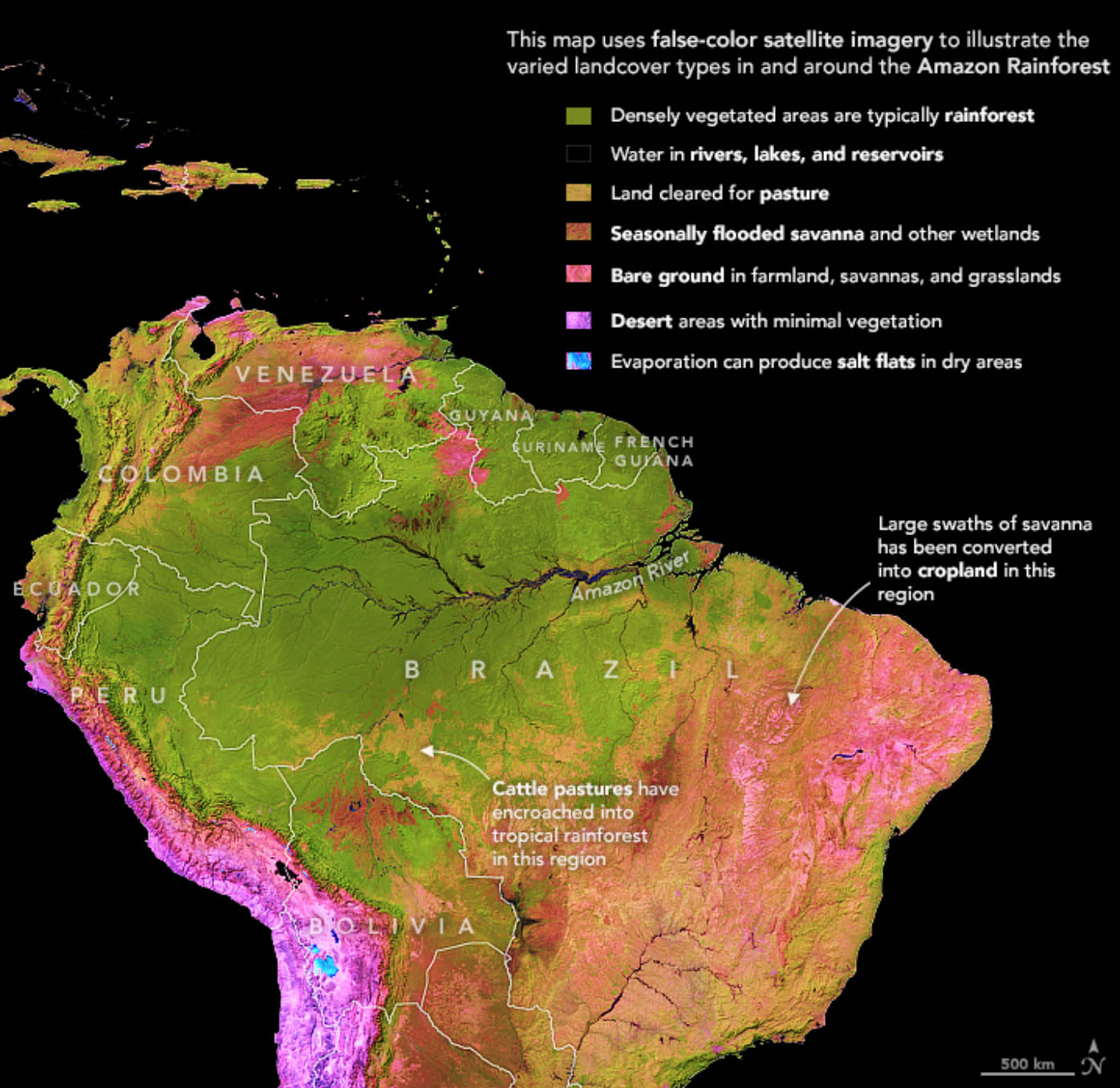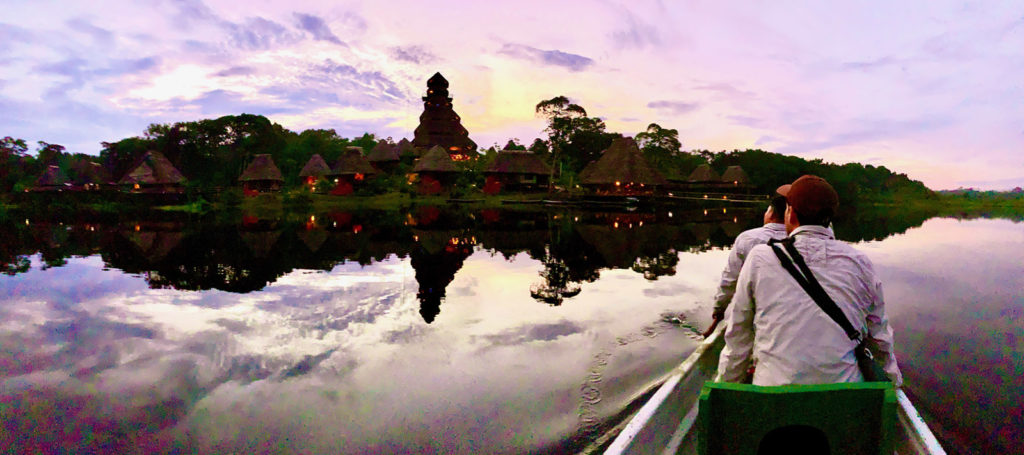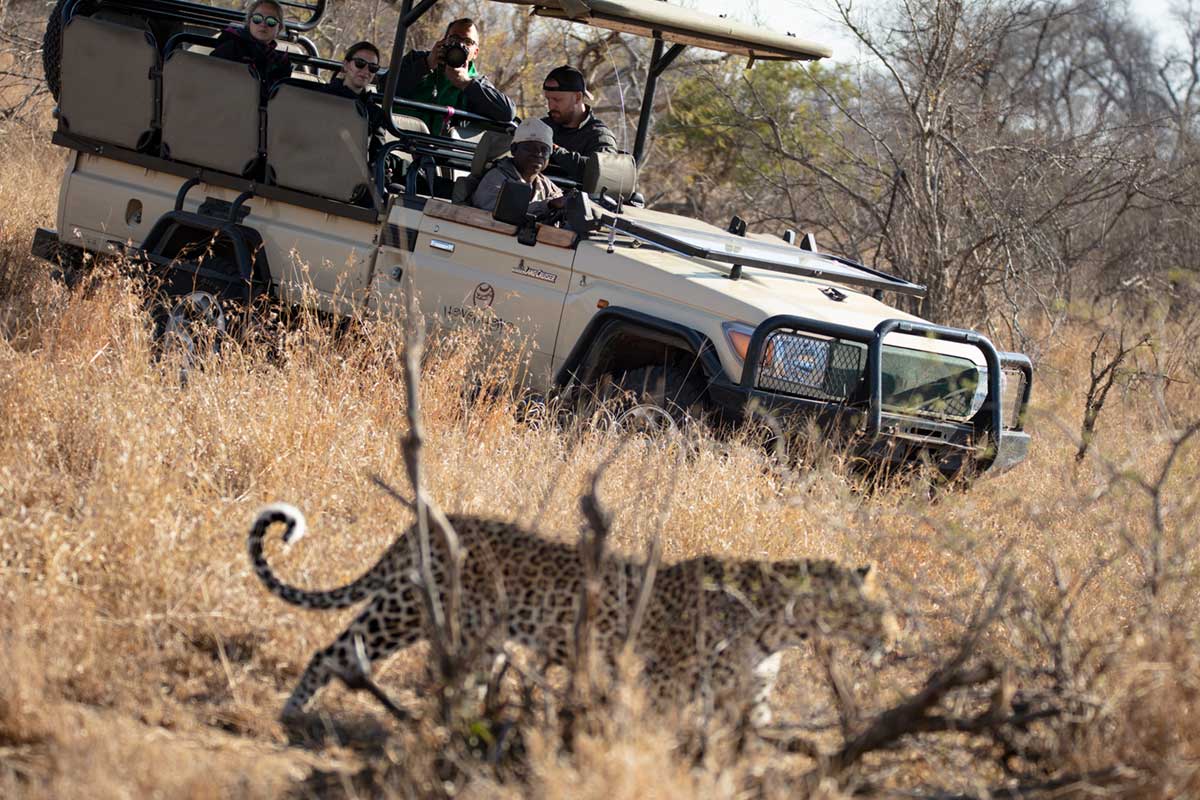
Exploring the Amazon Rainforest: A South American Safari
If you thought safaris were only in Africa, think again. The Amazon rainforest has many lodges which are similar to the ones in Africa with two “game drives” per day, all inclusive dining, snacks out in the bush, mosquito-netted beds in luxury villas, attentive staff and even night walks where they turn out all the lights and just listen to the jungle.
We chose the Napo Wildlife Center Ecolodge in the Yasuni National Park of Ecuador because we were already going to Galapagos. We decided to make it a wildlife photographer’s extravaganza and add the Amazon Rainforest. So we would add poison dart frogs, parrots, toucans and monkeys to giant tortoises, marine iguanas, blue & red footed boobies, penguin and undersea life. I will write about Galapagos in a future entry.
Map of the Amazon Rainforest from NASA
The Amazon Rainforest
When people refer to the Amazon, you might think they mean the equatorial river, one of the largest and longest in the world, which runs across South America mostly through Brazil and Peru. It starts about 100 miles east of the Pacific and ends in the Atlantic. The river flows from tributaries which originate high in the Andes of several countries – but the Amazon is more than just a river.
The Amazon basin, an area referred to as “Amazonia,” contains the river, its tributaries and vast areas of tropical rainforest. It has a much larger footprint, covering nearly 35% of South America, roughly 2.7 million square miles, and is located in many countries such as Brazil, Peru, Ecuador, Bolivia, Columbia, Venezuela and Suriname. The three most popular ecotourist hubs to explore Amazonia are Manaus, Brazil; Iquitos, Peru and Coca, Ecuador. You may see similar flora and fauna in various areas of the Amazon Rainforest, but species vary depending on climate, resources and adaptation.

Napo Wildlife Center
The Napo Wildlife Center is located in Yasuni National Park, often described as one of the most biodiverse places on Earth. When we saw photos of the lodge and its layout – set amidst towering rainforest trees, a blackwater lake and little else – we were intrigued. The mere description of how to reach the Napo Wildlife Center fascinated us. First you take a 30-minute flight over the Andes from Quito to Coca, then a 2-hour speedboat ride up the Napo River and finally a 2-hour, hand-paddled canoe trip through narrow and winding channels to the resort. It was the very definition of off the grid, yet somehow still had wifi – a veritable paradise made possible through the wonders of technology.
We were met at Coca Airport by Milton, our naturalist guide and introduced to Carlito, our wildlife spotter. As we sped down the Napo River with rainforest on either side I could not help but recall every show I had ever watched on the Amazon, a place I had perceived as wild, dangerous and full of life.







The Milton-Carlito team paddled our canoe once we were on the smaller river with Milton calling out wildlife as he saw it and explaining the various ecosystems and microclimates within the larger rainforest. Carlito would also point out wildlife that we never would have noticed high in the canopy above, nestled in nearby branches or hidden beneath damp leaves on the rainforest floor. He had grown up in the area of the Kichwa people who built and operate the lodge, while Milton had pursued formal education in Quito and abroad. Their skills complimented each other well.
The Resort
The ecolodge offers 20 cabins. The ones in the front are either on the water or over the water. We chose an over-water bungalow and they gave us the last one on the left below, just before the rainforest. Every day we saw or heard monkeys and birds in the nearby trees while spotting the glowing eyes of Caiman in the black water below at night. There is even a glass floor in one area where you can view the water below.



Meals are included, offered three times a day and take place in the main lodge, a 7-story structure at the heart of the resort with viewing platforms that overlook the entire area. The best part of this viewing platform is the elevator. Once you get to the top of the tower you realize how remote your location truly is. There is nothing but rainforest for as far as the eye can see.

Your “game drives” each day consist of a canoe ride and a hike, depending upon your interests. You rise early for the first one and complete the second just as it is getting dark, as these are the best times to see wildlife. There are several small rivers off the main lake, through which you will silently paddle for hours while species are pointed out and explained. There are also many hiking trails, a few treetop canopy viewing towers and a viewing blind to watch wild parrots at a clay lick. The experience is nothing short of astounding. In between the “game drives” is time for lunch, rest and showering, which you may find yourself doing multiple times per day here. You will take so many photos it seems there’s barely time to download them before another set is pending.



Canopy Tower
After a short canoe ride and hike you come to a 10-story Kapok tree with an adjacent tower of stairs to ascend. You are told there is a viewing platform at the top of the tree. When you begin your climb, as you look up at all the the stairs you may wonder if it’s worth it – it is, especially if you have a powerful lens, binoculars or a spotting scope. After a short time we saw many species of toucan, parrots and monkeys sitting at the top of the canopy, which might not have been visible from far below. Much of the wildlife was a quarter to a half mile away, so bring along your magnification of choice – it’s definitely necessary.






Parrot Clay Lick
The parrots in the Amazon seek out salt to aid digestion. This is done at the clay licks – areas with walls made of clay and small pools of water to drink. You sit and wait for them to arrive and they do – first Amazon parrots and then McCaws and parakeets. It’s amazing to see the often domesticated McCaw wild and free in its natural habitat, surrounded by lush, green vegetation.




Canoe Rides
Canoe rides leave from the lodge and take you through dark palm groves and black water swamps with heron, fly catchers, hoatzin, cormorants, anhingas and kingfishers in attendance. Every now and then you hear a disturbance in the trees and look up to see playful capuchin and squirrel monkeys running high above your head, jumping from branch to branch. Occasionally you hear the menacing sound of howler monkeys, and are comforted by the guide who tells you they only make that threatening sound so they DON’T have to fight. The experience is topped off with a sighting of 4-5 giant river otters, considered to be an apex predator here. Though they resemble their smaller river otter cousins you can’t help but notice their large teeth and sharp claws. They are often seen devouring fish along the sides of the bank.












Night Walk
Another incredible experience was a night hike around the forest. While there are jaguar in the area, most of what you see are insects you would not notice during the day. There were tree frogs, scorpion, spiders, bullet & leaf cutting ants, cicada, crickets and moths. The highlight of the walk is when you turn off your lights and listen to the sounds of the jungle at night, wondering if that thing you just felt was actually something crawling on you or a figment of your imagination. Your eyes will start to adjust but you are relieved when it is time to turn the lights back on.




We chose an extended stay of 4 nights and were glad we did. As avid photographers we were constantly presented with interesting wildlife subjects and the experience had the feel of a safari with the thrill of unexpected discovery. We hated to leave at the end and the one thing we would add is air conditioning to the rooms instead of only ceiling fans. We say this as Floridians who live in A/C, but at the same time, we realize resources are limited to solar and reclaimed water here and as an ecolodge this is how it is. We would not hesitate to go back, A/C or no A/C. This experience is one of a kind and we highly recommend it. There are other lodges in the area, some of them luxurious, but only this one held this level of allure for us when we were researching them.



